CH Precision Ethernet_IN HD board Upgrade
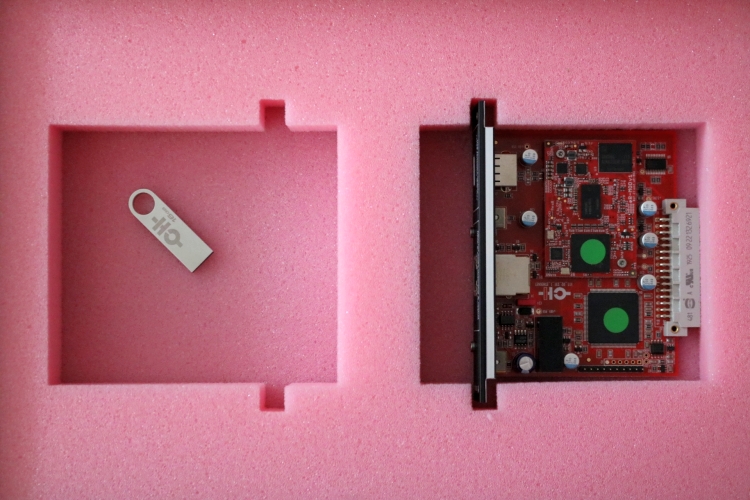
Review sample supplied by CH Precision
MSRP in the USA: 6000 USD
MSRP in the EU: 5800 euro (incl. 20% VAT)
The CH Precision C1 DAC and controller offers world-class audio performance but what makes its case even stronger is that it is also built in a fully modular manner. The unit can be upgraded and its functionality changed or expanded very easily by means of slot-in boards that are accessed from the unit’s rear end and without having to remove the lid.
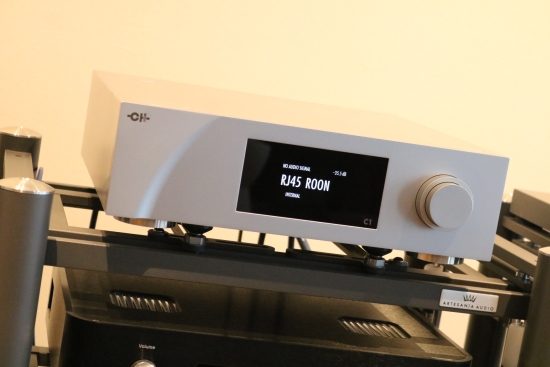
This modularity also means that the C1 be configured precisely as required by choosing precisely the connectivity that a given situation requires. Fully equipped, the C1 offers all the functionality that one could ever want. And if so desired, one could even insert multiples of the same board. You want 3 USB inputs? Done. The extra upside of this, as mentioned, is that the unit can be further expanded or improved when newer versions of the cards become available.
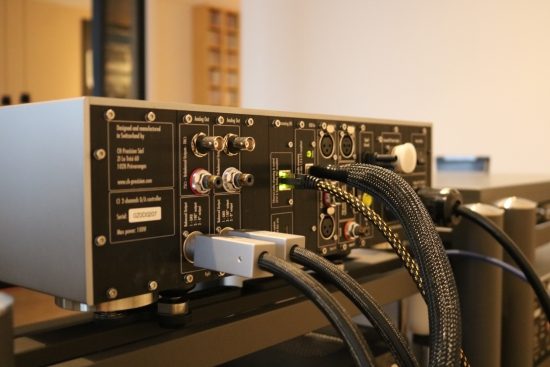
Recently, I already covered the DIG_IN HD board and found that “it made the C1’s presentation even more agile and exciting than before as well as more transparent and ultimately even more faithful to the source”. With many other brands, to obtain such a transformation, one would have to buy the next incarnation of a given product or, at the very least, send the unit back for a factory upgrade. With CH Precision products, however, all that it takes is a change of firmware (updated via USB thumb drive) and a new slot-in board.
Roon Ready
This review covers a new CH Precision board that I have been anticipating ever since I purchased the C1. It concerns the Ethernet_IN HD board which is the next version of the UPnP board. The reason why I have been looking out for it so eagerly is that in addition to being UPnP compliant it is now also Roon Ready.
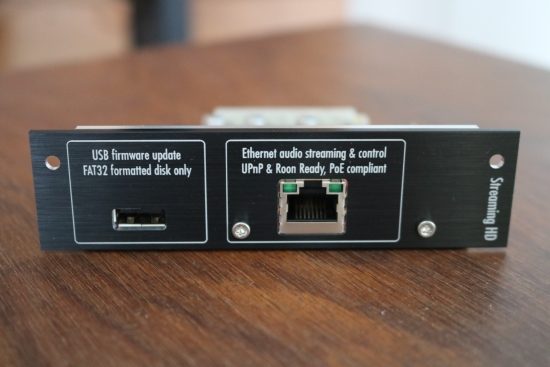
Yesss: Roon Ready!
The way I see it, Roon is the market leader in the field of streaming audio software and its interface is quite simply the best there is. Naturally, the C1 has always been capable of being used with Roon but, so far, only from a computer or Music Server/Streamer via USB, Coax, or AES/EUB. The new board now adds a direct ethernet connection meaning that, strictly speaking, only a Roon-capable NAS is required to complete the system. As I found when I first reviewed the C1, purely sonically, there is a lot to say for using its UPnP ethernet input. Simply put, using a Melco N1ZH server, this input seems to sound purer and more direct, less processed in a way, than its other inputs using other servers. Alas, the Melco server does not run Roon and the initial incarnation of the Ethernet_IN board was not Roon Ready so I resorted to using the Antipodes EX and later the CX+EX combo. Not that this was much of a sacrifice, far from it in fact. The CX did seriously raise the stakes coming from the EX and the Antipodes combo actually combined some of UPnP’s and USB’s strong assets and of course allowed the use of Roon.
USB Class
A factor with USB connections is the USB Class that is used for the data transfer. While most manufacturers opt for Class 2 and some of them intentionally stick with Class 1 (Jeff Rowland Aeris, for example) the CH Precision C1 lets the user decide between USB Class 1 or Class 2. Besides enabling sample rates over 96kHz which may or may not be important to you, Class 2 also sounds distinctly different from Class 1. In short, Class 1 sounds more earthy, more solid and sonorous, and Class 2 sounds more ethereal, airier and more spacious and free-flowing. While Class 2 offers benefits, they do come at the expense of some bass solidity and grip. For me, Class 1 remains favorite even if that means that I can’t play anything above 96kHz without downsampling. I have a nice selection of hi-res files but my main source is Redbook and if I do need to play higher res files than USB Class 1 supports then Roon downsamples them perfectly. For this reason, as well as because of the differences in sound, the choice between Class 1 and Class 2 remains a personal one.
UPnP and Roon
Alas, I no longer have the N1ZH at hand for a direct comparison but I vividly recall how its sound differed from that of the Antipodes units. While I found the Melco to sound better than the EX (please read the review for the specifics), the CX+EX combo’s combined quality resulted in a presentation that was still different but just as good overall and, subjectively, even better on certain points. While the new ETHERNET_IN_HD board still supports UPnP, I will focus on Roon only.
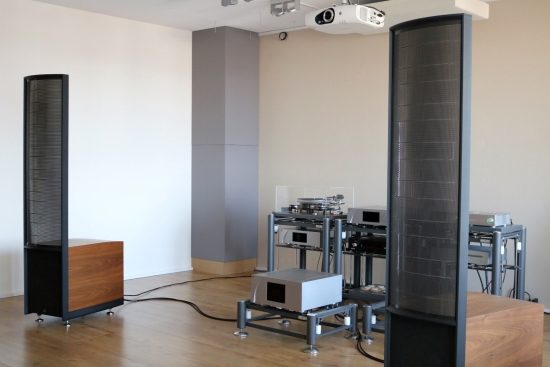
Listening Setup
For this review, the system consists of the Antipodes CX and EX server combo connected via Final Touch Audio Callisto USB cable to the C1 DAC, direct into the A1.5 power amp using CH Precision Balanced Link XLR cables. Loudspeakers are the Martin Logan ESL15A’s connected to the A1.5 via Jorma Trinity speaker cables. All the electronics are on Artesania Exoteryc racks and Aire floor platforms coupled with Carbon Linear Arms. Power cables for all components except the speakers are Belden 19364 with Bals Schuko and Oyaide C-004 IEC connector.
Ethernet and USB
For this review, I will assess the differences in the C1’s performance between the new ethernet input and its existing USB input, both using the same Antipodes CX server running Roon. More specifically, in case of the C1’s ethernet input, the CX is connected using a direct ethernet cable and in case of the C1’s USB input, the CX is connected using the same ethernet cable to the EX (used as a renderer) which is then connected to the C1 using a USB cable. So, in both cases, the CX is used in its capacity as a Roon server and in both cases, the ethernet cable is the one delivered with any Antipodes server. The USB cable is the Final Touch Audio Callisto.
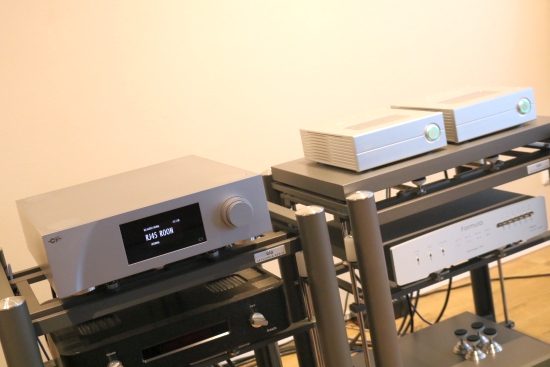
Ethernet performance
A nice property of the ethernet connection is that all formats are supported. All samplerates, including those for DSD in all its forms, are processed natively and so this eliminates the requirement to choose between two variables. What really makes the case for Ethernet, however, is that it sounds even better than the best USB connection that I have been able to achieve. As indicated earlier, the Antipodes CX+EX combo via USB equalled the Melco N1ZH’s performance via ethernet and improved on it in certain areas. For instance, even if the Melco sounded even more refined and airy, it did not keep pace with the Antipodes combo’s more textured, fuller and more solid sound. Objectively, I think it is fair to say that between these opposites, it is more a matter of personal preferences than of absolute performance.
When switching from the USB connection to the new Roon ethernet input I was surprised to find that the two deliveries are very close. To the casual listener, they pretty much sound the same! There are no differences in terms of soundstage size, width, or depth, no change in tonality and no change in the perceived pacing. While that may sound like it is not a big achievement, it really is! Especially noting that the CX ethernet connection’s bass is every bit as solid and sonorous and the timbre is just as rich as via the EX’s USB connection truly is a big deal because, so far, that has been the exclusive territory of the Antipodes EX. I think this proves two points. First, the C1’s processing of the ethernet signal is really superb, and second, the Antipodes CX is one heck of a music server.
But it’s not a tie, really. Almost subliminally at first, but fully consciously later, the differences between the two signals emerged. At first, it is the sense of the ethernet connection sounding slightly more resolute, as if the transients are less rounded at their peaks, resulting in a slightly more direct sound. But the mind quickly adjusts to this, and after a few tracks, the overall feeling is for a difference perhaps too close to be really relevant. That is until I switched back. That’s when the extent of the change became really apparent. After having listened to the ethernet sound for a couple of tracks and replaying the same tracks via the USB connection I was left with a feeling of mild disappointment. Sure, the sound was still really good and the rounding effect may even sound very pleasant to some ears but via USB the music had lost some of its momentum. Indeed, the transients appear to be more rounded and, as a result, the delivery is less energetic and less propulsive. Ultimately, the effect that this has on me is a feeling of being further removed from the source, less like listening to a “live” performance and more like listening to a recording that has had some processing applied to it. When having switched back and forth a few times it was absolutely evident that I had a clear preference for the ethernet connection.
To be fair, the differences are there but they are not huge. But once they have been identified it becomes difficult to go back. The mind quickly adjusts to a better delivery but has trouble filling in the gaps when stepping back. Importantly, the ethernet connection retains literally all of the flow and lyrical qualities of the USB connection. Heck, I even feel that the ethernet connection actually involves me more, not only cerebrally but also emotionally. I know the “M”-word is open to interpretation but I think in this case it conveys precisely the point that I wish to make: the ethernet connection is technically more precise yet every bit as musical.
Conclusion
While I often have a tendency to see things from different perspectives, the new Roon Ready ethernet board leaves no room for such interpretations. On this, I can be very clear: the C1 has simply never sounded better than via this new connection. And as a bonus, you get to use the superb Roon interface. It’s a win-win!
The Ethernet_IN HD board is a no-brainer of an upgrade. Yes, it is costly, but it saves the cost of a renderer and a USB cable and this kind of direct connection really sounds better than any intermediate renderer- or signal conversion unit that I have used. And while investing in high-end USB cables really pays off, there is no need to go beyond a basic good quality Cat 6 ethernet cable.
This concludes my assessment of the board’s sonic properties. For more technical information, continue reading on the next page of this review.







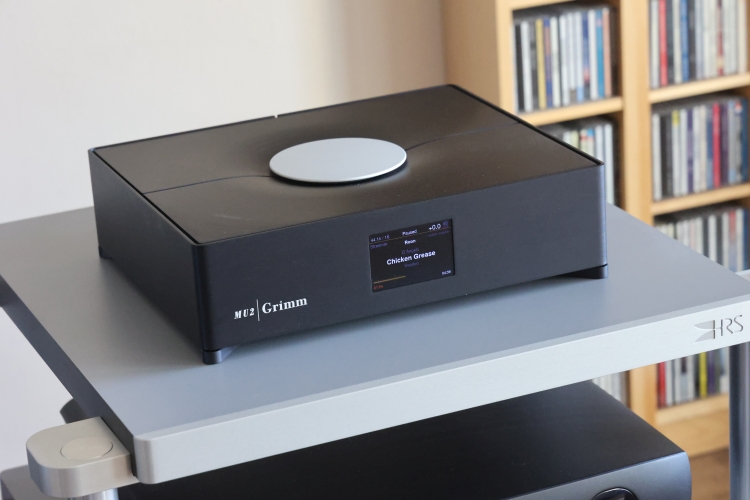
Did you try better ethernet cables?
They might improve the sound even further.
Hi Rick, I experimented with Ethernet cables a lot and found that, in general, I prefer CAT6 over CAT5 but also found that even between same types of different no-name brands there can be differences in sound. Usually, these exhibit themselves in the perceived tightness and transient attack, or, if thinking of the reverse, some blur and softening of transients. While I have found that (very) expensive Ethernet cables definitely can make for a different perspective, so far, I have not found their deliveries to be structurally better than a regular good CAT 6 cable. One thing that is worth investigating, though, are filtered Ethernet switches and paying attention to their power supplies can also have an unexpectedly large impact.
Ah, ok interesting. I have tried a few ethernet cables, Supra, Ansuz, Wireworld, Chord and so forth. Haven’t found a clear winner yet, therefore I’ve stayed with the cheap Supra that sounds somewhat slow and quite warm but still better than a lot of alternatives.
Btw, thanks for the reviews you are doing. I’ve benefited a lot from your insights.
Hi Rick, especially when you are looking for a warmer sound then this can also be obtained using Ethernet cables. However, one has to wonder if the “rounding” effect in this case is not achieved at the expense of some precision. Personally, I have been moving away from any cable-induced warmth or smear and now I prefer clean and accurate sound. Ultimately, however, only you can decide, of course. Music’s beauty is in the, well, ear, of the beholder:-)
I’m a “tube-guy” that prefer warmth over resolution, to put it short. 🙂
Hello Rick,
What’s the ethernet plugs on your Supra?
The plug quality affects the sonic result significantly.
Currently the best is the new Telegartner cat8.1 plugs.
The old model Telegartner ethernet plugs are better than all other barnds in the market, but this new plug is even better. Easily audible!
Pls try. 🙂
Just standard supra.
Will look into it, thanks.
A suggestion for a review/article is a comparison of ethernet cables presented in a chart with keywords such as warmth, etc. Is that something you would consider?
Thanks again for your continued effort, it’s appreciated.
Hi Rick, that’s certainly an idea but for now it’s not on my agenda.
Hello Christiaan,
Thanks for the C1 Roon-compatible ethernet card review.
I consider your website one of the best among all audiophile webzines.
There are a lot of CH Precision users in Hong Kong.
Hope that you may test/review the CH Precision T1 Clock in future, and maybe compare it to other audiophile external clocks such as Mutec Ref10 or Cybershaft.
Thank you again!
Hi CK, good to hear you like my articles:-) I plan to review more CH products indeed. First on the list are the L1 preamp and the X1 external power supply. After that, no planning just yet.
Christiaan, the L1 is my next purchase. I’d be interested to hear your opinions on adding this to the C1. I have active speakers so perhaps your results might not be as I find but I plan to demo an L1 nonetheless.
For this, please read my L1 review in which all is revealed. I can add to that review that the longer I used it the more it became my jack of all trades. It simply does not impose any character and that is great for reviewing. The L1 is sadly gone again now.